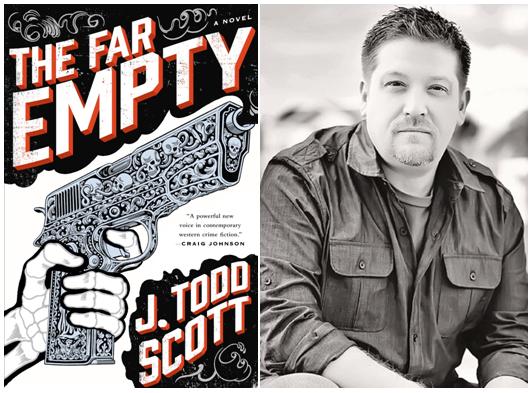Fans of “The Far Empty” gathered on foldout chairs at Barnes and Noble on June 8 to meet the author, J. Todd Scott, for a Q&A session. The newly published author spent the session answering questions honestly and bashfully. It was as if he was still in a state of shock knowing his novel now populates Barnes and Noble’s shelves.
His debut novel, “The Far Empty,” can be described as a western crime novel set in modern times that captures the heart and landscape of southwest Texas. The novel follows a 17-year-old boy named Caleb who is dealing with the absence of his mother, who he suspects was killed by his father
Scott got the inspiration to write the novel while working for the Drug Enforcement Administration for 20 years. He had the first sentence—“My father has killed three men”—written on a piece of paper for years before finally sitting down and writing the novel.
“The character of Caleb Ross was natural to come out of that, and the rest of them just kind of formed as I was writing the book,” Scott said. “The bulk of the plot I put together while driving between Alpine and Midland.”
The novel follows a plethora of characters who reside in the small, fictional town of Murfee, Texas and are all connected by one simple thing: a dead body.
The first chapter of the novel is fairly intriguing, confirming early on that Caleb believes his father, the beloved sheriff of the town, killed his mother. However, the novel’s pace slows down significantly after that, and getting through the first 100 or so pages, which makes up the first part of the book, “Bone,” was an uphill battle.
Once past the slow lump of the first part of “The Far Empty,” the story really takes off. What was neat about the storyline itself is you already knew the who, what and when of the murder mystery, but not the why or how. While carrying on with the novel was tough to do, that small facet of not knowing why or how, or the clear connection that could exist between the other characters encouraged you to keep reading.
“The book is big and challenging,” Scott said. “There are some complicated characters in it, but one of the things I wanted people to get a feel of was the area.”
“Bones” ends with a mysterious death and Deputy Cherry, one of the main characters, discovering that the body that had been found in the second chapter was not Caleb’s mother like expected. As slow-paced as it was, by the time you reach the second part of the novel, “Blood,” you’re itching to find out just exactly what is going on.
“Blood,” was definitely more exciting than “Bones”. Scott’s description of Sherriff Ross, Caleb Ross’ father and main antagonist in the novel, is chilling and compels you to fear him regardless of the fact that he’s fictional. His power over the town of Murfee and the people who live there is mindboggling and scary.
Scott is talented with his description of places and characters – the way the stars in Murfee look at night and the effects of drugs on Deputy Dupree’s almost rotting body. His description of Murfee and the surrounding Big Bend area really captures the look and feel of the region, like you’re looking up a picture of it on Google.
“I spent a lot of time down in Alpine and the Big Bend area, and I wanted to highlight these areas, which I found fascinating and beautiful,” Scott said. “If nothing else, people’s eyes are opened to a part of the country that not many people know about.”
While long, Scott’s writing makes it feel like a never-ending rollercoaster.
The third part of the book, “Ashes,” was sort of a letdown.
The buildup was fantastic. The writing gives you enough to be satisfied, but takes away just enough for you to keep reading, but once the ending was revealed, the only reaction was “Huh?”
After all the buildup, the big revelation and showdown both fell flat.
Although it is never confirmed Sheriff Ross killed Caleb’s mother, the rest of the characters act out on their suspicions anyway, convincing his right hand man, Deputy Dupree, to kill him, and then subsequently killing Dupree. The body found in the second chapter is also revealed to be the main character’s brother, although this is revealed shortly into “Blood,” who was killed by Dupree. The majority of the characters leave Murfee behind afterward in search of a better life.
The novel in the end turned out to be a hodgepodge of characters whose lives somehow intertwine, but none of it feels natural. Scott is wonderful at writing descriptions and dialogue, creating characters that are almost too well written to be fictional, but fails at delivering with his storyline. While a suspenseful and engaging read, a more convincing ending could have made this novel, which had immense potential, far better.
Julia Hettiger may be reached at [email protected].






